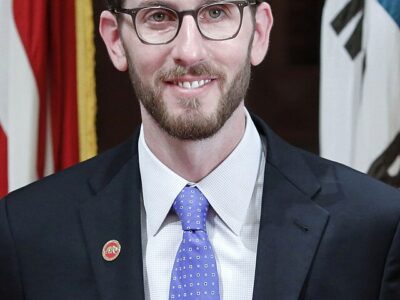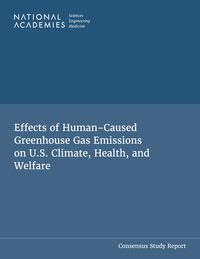The Mirage of Trump’s State Climate Law Executive Order
There is no overreach.
On Tuesday, the White House released an Executive Order titled “Protecting American Energy from State Overreach.” It is unclear what the order believes is in need of protection, but it is certainly not the near-term health of our lungs or the long-term livability of our communities. What is clear, fortunately, is that there is little to no legal or constitutional overreach in the state climate programs it purports to target.
The order says that “many States have enacted, or are in the process of enacting, burdensome and ideologically motivated ‘climate change’ or energy policies that threaten American energy dominance and our economic and national security.” It calls out California’s long-standing greenhouse gas cap-and-trade program, as well as New York’s and Vermont’s recent laws reinforcing the right to hold major emitters responsible for climate impacts they have contributed to, as “illegitimate impediments” to “American energy.”
The claims made in the order–for example, that state climate laws “devastate Americans by driving up energy costs for families coast-to-coast” and “undermine Federalism by projecting the regulatory preferences of a few States into all States”–are neither accurate nor particularly worth disputing.
However, at the most basic level, the order gets federalism and environmental law all wrong. Constitutional federal supremacy and federal preemption are powerful but narrow principles. The Constitution–as an 18th Century text, notoriously silent on energy and climate policy–explicitly reserves to the states all rights not granted to the federal government. And federal law can absolutely preempt and displace state and local law, but only when the federal statute clearly and specifically states so, or when it obviously occupies the entire field in question. Federal environmental laws follow this structure, generally setting a floor (not a ceiling) for environmental protection, and only restricting local authority to go further in limited and explicit circumstances. The order attempts to read these bedrock principles in reverse.
Building on this mistaken premise, the order directs the Attorney General to identify all state and local laws “burdening the identification, development, siting, production, or use of domestic energy resources that are or may be unconstitutional, preempted by Federal law, or otherwise unenforceable” and to take action to stop their enforcement. The AG is told to focus on laws dealing with climate change, environmental justice, ESG, and greenhouse gases.
But the search for state and local laws that violate the Constitution or federal preemption is likely to prove time-consuming and largely fruitless. As noted, these restrictions are narrow, clear, and widely understood. State and local lawmakers crafting climate strategies are acutely aware of the federal limits on state authority and craft their programs accordingly. These limits include, most importantly (and reductively):
- The Commerce Clause of the Constitution (specifically its “dormant” varietal), which bars states from enacting laws that prohibit the import of out-of-state goods (or energy) or explicitly discriminate against out-of-state businesses.
- The Clean Air Act, which prohibits states from exceeding federal emissions standards for motor vehicles, with the significant exception of California’s statutory ability to obtain a preemption waiver for standards needed to tackle the state’s singular air pollution challenges.
- The Energy Policy and Conservation Act, which grants the US Department of Energy authority to regulate energy efficiency for consumer products and appliances, and the National Highway Traffic Safety Administration authority to regulate fuel economy for vehicles.
- Multiple laws authorizing the Federal Energy Regulatory Commission to regulate interstate sales of electricity and gas.
Indeed, federal law and the Constitution can and do restrict the ability of state and local governments to conduct very specific aspects of energy policy. States cannot ban or impose differential tariffs on out-of-state electricity or fuels; they cannot regulate vehicle emissions unless they are following California’s EPA-approved standards; they cannot dictate the energy consumption of a refrigerator or a dishwasher.
Good news: the vast majority of our headline state and local climate programs were designed precisely with these restrictions in mind, and they address only those aspects of energy policy that are not reserved to the federal government. In California, for example, these programs include:
- The Renewables Portfolio Standard, which requires electric utilities to obtain a minimum percentage of their power from zero-carbon sources. The RPS does not restrict the utilities’ ability to procure power generated outside the state and triggers no constitutional or federal statutory concerns.
- The Low Carbon Fuel Standard, which requires sellers of transportation fuels to decrease the carbon intensity of those fuels over time. The LCFS evaluates carbon intensity in part based on the emissions generated in transporting fuel to its final destination, but this has nothing to do with state boundaries and everything to do with chemistry and physics. The LCFS has already survived a Dormant Commerce Clause challenge.
- The Cap-and-Trade Program, which requires stationary sources of GHG emissions in the state (e.g., gas plants, refineries, and industrial facilities) to reduce their emissions over time or obtain credits from those who reduce more than required. The Clean Air Act does not preempt state authority to limit stationary source emissions or bar state-level emissions trading schemes.
- The Advanced Clean Cars II Program, which requires automobile sellers to increase the percentage of zero-emission vehicles they sell in the state, up to 100% zero-emission in 2035. EPA has already issued a waiver for this program, which clearly meets the Clean Air Act waiver standards, and as Ann Carlson noted this week, rescinding or eliminating it would not be straightforward.
- The California Climate Crisis Act, which establishes a state target of net zero GHG emissions by 2045 and directs the Air Resources Board to implement policies (like RPS, LCFS, Cap-and-Trade, and ACCII) to achieve it. I know of no federal law that touches such a policy.
These are just a few big-name examples; there are dozens of similar programs in states around the country, and hundreds of local equivalents. Many of these have already faced (and some have failed!) preemption challenges, with the EPCA-based overturning of city bans on gas in newly constructed buildings perhaps the most prominent recent example.
Plenty of industry and ideological litigants have been challenging these state and local laws in the courts for decades, and the authority of state and local governments to address climate change through appropriate legislative action has largely withstood the test. These laws and rules are carefully constructed to work within their legally and constitutionally assigned limits. The overreach is a mirage.







Reader Comments